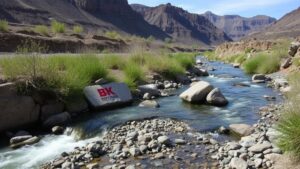Techniques for Processing Copper Ore in Remote Prospecting Locations
Techniques for Processing Copper Ore in Remote Prospecting Locations
Copper is one of the most significant metals used in various industries, from electrical engineering to construction. As global demand for copper continues to grow, the exploration and processing of copper ore in remote locations have become increasingly relevant. This article discusses various techniques for processing copper ore, focusing on methods applicable in challenging environments.
1. Understanding Copper Ore Types
Before embarking on mining and processing copper ores, it is crucial to understand the different types of copper-bearing ores:
- Sulfide Ores: These ores, such as chalcopyrite (CuFeS2), make up a significant portion of the worlds copper deposits and often require more complex processing techniques.
- Oxide Ores: These include minerals like malachite (Cu2CO3(OH)2) and azurite (Cu3(CO3)2(OH)2). They are generally simpler to process, utilizing methods such as leaching.
2. Initial Steps in Processing Copper Ore
The first step in processing copper ore involves extraction, typically achieved through various mining methods. In remote locations, the choice of mining technique largely depends on the ore type and the available infrastructure. Common methods include:
- Open-pit mining: Ideal for surface deposits, this method involves removing large quantities of overburden to access ore beneath.
- Underground mining: Used for deeper deposits, this technique minimizes surface disturbance but requires more advanced logistical support.
3. Crushing and Grinding
After extraction, the ore undergoes crushing and grinding to reduce particle size and liberate copper minerals from gangue. In remote locations, portable crushers and grinding mills can be deployed, enabling on-site processing. For example, a mobile jaw crusher paired with a cone crusher can streamline the process, ensuring that the material is adequately reduced.
4. Concentration Techniques
The next step is concentrating the copper content from the crushed ore. Several techniques are employed based on the ore type:
- Flotation: A prevalent method used primarily for sulfide ores, where chemicals are added to create a froth of copper-rich minerals that can be skimmed off.
- Gravity Separation: Used mainly for oxide ores, this technique exploits the density differences of minerals to separate copper from waste material.
For example, the Sepon mine in Laos utilizes flotation to concentrate copper sulfide ores, achieving copper recovery rates exceeding 90%.
5. Hydrometallurgical Processing
Hydrometallurgy is used mainly for oxide ores and involves leaching the copper from the ore using dilute sulfuric acid. This technique provides several benefits in remote locations, such as low environmental impact and reduced energy requirements. A notable case is the Bagdad mine in Arizona, where in-situ leaching has been successfully implemented, allowing extraction directly from the ore body without traditional excavation methods.
6. Electrolytic Refining
Once copper has been concentrated through flotation or leaching, the next step is refining. Electrolytic refining is a process that purifies the copper obtained, wherein the impure copper is dissolved in an electrolytic solution and metallic copper is deposited on cathodes. This technique can be carried out relatively easily in remote settings, provided that the necessary electrical power supply is available. The refined copper can achieve a purity of over 99.99%.
7. Environmental Considerations and Sustainability
Processing copper ore in remote areas poses environmental challenges, such as habitat disruption and potential water contamination. So, incorporating sustainable practices is essential. For example, implementing a closed-loop water system can minimize water usage and reduce the ecological impact. The use of renewable energy sources, like solar or wind, can also power mining operations in these areas, significantly lowering their carbon footprint.
8. Conclusion and Future Directions
As the demand for copper continues to escalate, innovative techniques for processing copper ore in remote locations will become even more vital. Advancements in technology and an increasing focus on sustainability will shape future operations in this field. Companies should consider adopting flexibility in their processing methods to adapt to specific ore types and local conditions effectively.
In summary, understanding the type of copper ore, efficiently crushing and concentrating it, and employing environmentally friendly processing methods are crucial to enhancing productivity in remote mining sites. With strategic planning and technological innovation, the processing of copper ore in challenging locales can be both feasible and sustainable.



